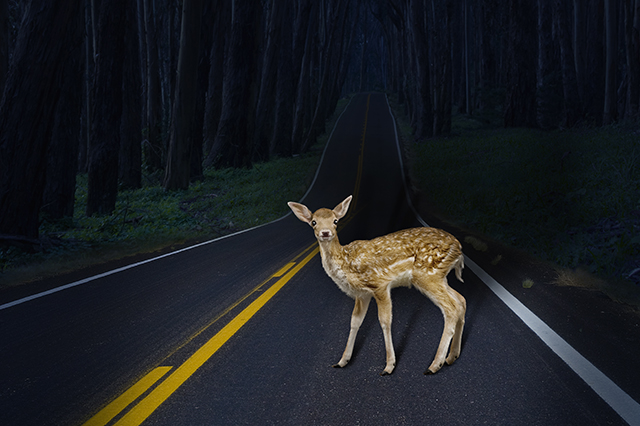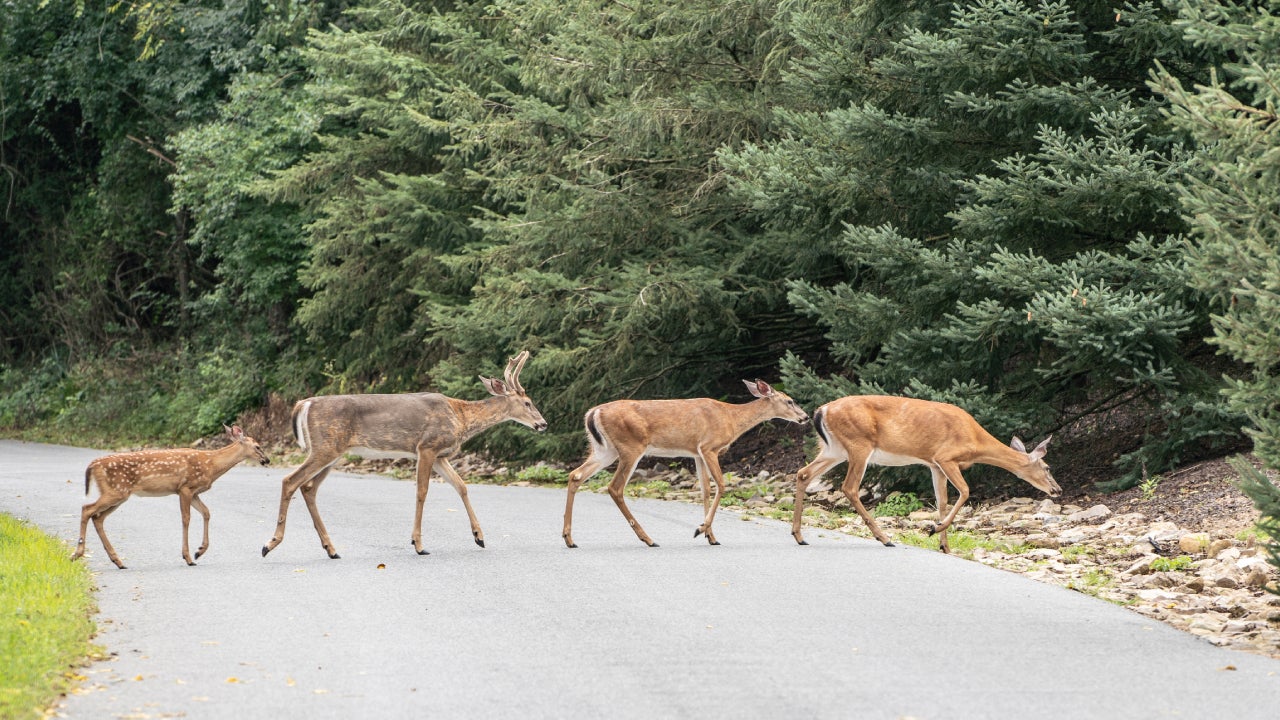How NOT to Hit a Deer (and What to Do If You Actually Hit One)

by AutoExpert | 12 February, 2025
Picture this: You’re cruising down a quiet road, vibing to your playlist, when suddenly—BAM—a deer materializes out of nowhere like a woodland ninja. Deer don’t care about your commute, your deadlines, or your flawless driving record. They’re basically fuzzy toddlers with zero impulse control. And according to a recent study, these guys caused 1.5 million insurance claims in just one year. Yikes.
So, how do you avoid becoming a deer’s next TikTok fail video? And if the worst happens, what the heck do you do? Let’s break it down, no jargon allowed.

Deer Dodgeball 101: How Not to Hit ‘Em
1. Timing is everything.
Deer are creatures of habit—they love their dawn and dusk strolls, especially during fall (mating season) and spring (road trip season, apparently). If you’re driving through deer territory (you’ll know by those yellow diamond signs with the deer silhouette), stay woke. This isn’t the time to zone out or scroll Instagram. Pretend you’re in a real-life game of Frogger.
2. Don’t panic-swerve. Seriously.
If Bambi pops up in your headlights, slam those brakes (safely, obviously) but keep the wheel straight. Swerving might save the deer but launch you into a tree, a ditch, or oncoming traffic. Spoiler: Hitting a tree is way worse for you. And insurance won’t cover that mess unless you’ve got collision coverage.

3. Deer never travel solo.
Spot one deer? Congrats, you’ve found the decoy. There’s probably a whole squad lurking in the bushes. Slow way down or even stop (if it’s safe) until the coast is clear.
4. Honk like you’re in a parade.
Deer hate loud noises. A long, aggressive honk might scare them off the road—or at least freeze them in place. It’s like shouting “NOT TODAY, SATAN!” but for deer.
5. Claim the center lane.
On multi-lane roads, hog the middle (stay in your lane, though). This gives you extra reaction time if a deer decides to photobomb your drive.
Oh Crap, I Hit a Deer. Now What?
Even if you’re the most cautious driver, deer have a death wish. Here’s your post-collision game plan:
1. Pull over ASAP + hazard lights ON.
Get your car to a safe spot—the shoulder, a parking lot, whatever. Throw those hazard lights on so other drivers don’t rear-end you.
2. Don’t play Disney Princess.
That injured deer? It’s not gonna thank you for checking its pulse. Stay back—they’re scared, confused, and might kick or bolt unpredictably.

3. Call the cops (and 911 if anyone’s hurt).
Do you have to report hitting a deer? Technically no, but a police report is golden for insurance claims (if you have comprehensive coverage). Plus, if the deer’s carcass is blocking traffic, the authorities need to clear it.
4. Snap pics like a paparazzo.
Take photos of everything: car damage, road conditions, deer remnants (yes, even the gross stuff). If the cops don’t show, this evidence is your lifeline for insurance.
5. “Can I drive this thing?” Check.
Is your car spewing fluids? Is the windshield shattered? If it feels sketchy, don’t risk it. Call a tow truck or roadside assistance.
6. Ring up your insurance agent.
Have your policy number, photos, and police report ready. Time to make it their problem.

Will Insurance Cover My Deer Drama?
If you only have liability insurance: Nope. Liability covers other people’s stuff, not your run-in with a rogue deer.
If you have comprehensive coverage: Yes! This covers the “weird stuff” (theft, vandalism, natural disasters, and yes, animal collisions).
If you swerved and hit a tree instead: That’s where collision coverage comes in. It covers your car no matter who’s at fault.

Deductibles: You’ll pay your chosen deductible first (say, $500), then insurance covers the rest. Pro tip: Lower deductible = higher monthly premiums.
Will my rates go up? Probably not much. Comprehensive claims (like deer hits) are less likely to spike your rates than at-fault accidents.

Bottom line: Deer are chaos incarnate, but staying alert and knowing the drill can save you a headache (and a bumper). Drive safe out there—and maybe keep an airhorn handy.
















